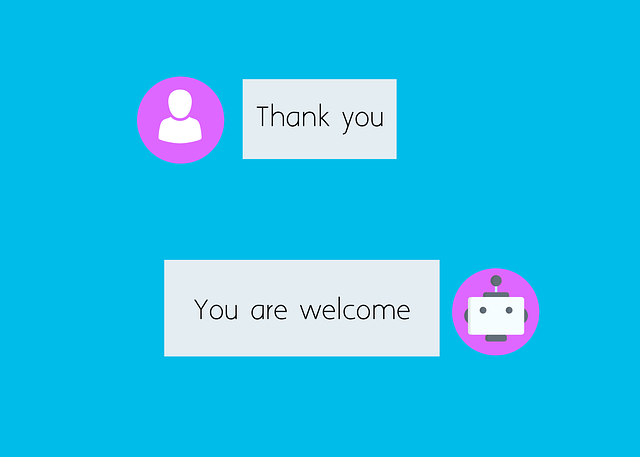In today's competitive ecommerce environment, implementing an ecommerce chatbot on Shopify platforms is a strategic move. These AI-powered assistants offer 24/7 support, instant query resolution, and personalized product recommendations, enhancing user satisfaction and sales potential. Effective implementation involves choosing a compatible platform, setting up the app, designing conversation flows, training with relevant data, and thorough testing. Best practices include leveraging NLP for accurate responses, personalizing interactions, using data analytics, and maintaining open communication channels. Success is measured through key metrics like message response time and conversion rates, both crucial for customer satisfaction and increased sales.
“Unleash the power of automation in your online store with Shopify chatbots! This comprehensive guide explores the transformative potential of these AI-driven tools in the dynamic world of ecommerce. From understanding the fundamentals and uncovering benefits like enhanced customer engagement, to a step-by-step implementation process, we’ve got you covered.
Learn best practices for seamless integration and discover key metrics to measure success. Master the art of chatbot optimization to elevate your Shopify store’s performance and drive sales.”
- Understanding Ecommerce Chatbots: The Role and Benefits
- Implementing Shopify Chatbots: Step-by-Step Guide
- Best Practices for Effective Shopify Chatbot Integration
- Measuring Success: Key Metrics for Evaluating Chatbot Performance
Understanding Ecommerce Chatbots: The Role and Benefits

In the dynamic landscape of ecommerce, understanding the role and benefits of an ecommerce chatbot is paramount. These virtual assistants are designed to interact with customers in real-time, providing instant support and enhancing user experiences. By leveraging artificial intelligence, chatbots can answer queries, offer product recommendations, and even facilitate basic transactions, thereby increasing customer satisfaction and sales potential.
One of the key advantages of ecommerce chatbots is their 24/7 availability. They ensure that customers receive immediate assistance regardless of time zones or business hours. This capability not only improves customer service but also encourages prospects to convert into buyers by addressing their concerns promptly. Moreover, chatbots can personalize interactions based on user behavior and preferences, creating a more tailored shopping experience.
Implementing Shopify Chatbots: Step-by-Step Guide

Implementing Shopify chatbots is a straightforward process that can significantly enhance your online store’s performance. Here’s a step-by-step guide to get you started with these powerful tools:
1. Choose the Right Platform: Select an ecommerce chatbot platform compatible with Shopify. Many options are available, each offering unique features and pricing plans. Ensure it aligns with your business needs and budget.
2. Set Up Your Chatbot: Once chosen, install the chatbot app on your Shopify store through the App Store. Follow the installation prompts, which typically involve granting necessary permissions and customizing basic settings to match your brand voice and preferences.
3. Design Conversation Flows: This is where you define how your chatbot will interact with customers. Create conversation paths based on user queries or cart events. For instance, welcome messages, product recommendations, order status updates, and abandoned cart reminders are common use cases. Use the platform’s visual builder to map out these conversations.
4. Train Your Chatbot: Input relevant data and train your chatbot using example questions and responses. The more you teach it, the smarter it becomes at understanding user intent. Fine-tune its ability to handle different customer inquiries effectively.
5. Test and Deploy: Before launching, thoroughly test your chatbot on various scenarios to ensure accurate responses. Once satisfied, enable the chatbot on your live Shopify store. Monitor its performance, gather user feedback, and make adjustments as needed.
Best Practices for Effective Shopify Chatbot Integration

When integrating a Shopify chatbot, it’s essential to adopt best practices that ensure optimal performance and enhance customer experience. The key lies in natural language processing (NLP) – training your chatbot to understand diverse user queries and provide relevant responses accurately. Personalization is another critical aspect; tailoring interactions based on customer history and preferences can significantly boost engagement.
Leverage data analytics to track chatbot performance, identifying areas for improvement. Integrate the chatbot seamlessly with your Shopify store, ensuring a smooth flow of information between them. Additionally, maintain open lines of communication – allow customers to opt-out or provide feedback easily. Remember, an effective ecommerce chatbot should streamline shopping experiences while offering human-like interactions.
Measuring Success: Key Metrics for Evaluating Chatbot Performance

Measuring the success of an ecommerce chatbot is crucial for understanding its impact on customer engagement and sales. Key metrics include message response time, which gauges how promptly the chatbot interacts with customers, influencing their satisfaction levels. A fast response time enhances user experience, encouraging longer browsing sessions and potential purchases.
Conversion rates are another vital metric. By tracking the number of visitors who engage with the chatbot and subsequently make a purchase, businesses can assess the chatbot’s effectiveness in driving sales. High conversion rates indicate that the chatbot is successfully guiding customers through the buying process, providing valuable product recommendations, and building trust in the brand.
Shopify chatbots are a powerful tool for enhancing customer engagement and streamlining ecommerce operations. By understanding their role, implementing effectively, and adopting best practices, businesses can harness the potential of these AI assistants. Regular evaluation using key metrics ensures continuous improvement, making ecommerce chatbots an invaluable asset in today’s competitive digital landscape.
